What comes to mind when you think of Corsica? Perhaps bandits and vendettas, Napoleon Bonaparte or Christopher Columbus, superb kayaking and climbing or maybe citrus plantations and sunshine....The French island shaped like a pointing hand, a jewl of the mediterranean, offers a wealth of diverse natural landscapes ranging from perfect white sandy beaches, rugged red rocky coastlines, crystal clear waters, to high alpine snow capped peaks. A common feature of the Corsican countryside is the macchia/maquis shrubland, or dense thicket of vegetation, where the bandits and guerrillas used to hide out. It seems that the true nationalistic blood keeps flowing through the Corsican's veins as the French translations on road signs are still being mutilated by bullet holes and spray paint by these franco-italian locals...
Clearly, Corsica has plenty to offer for a family trip, and so we embarked on our first camping adventure of the year.
 |
| Tommy overlooking Bastia. |
Traveling to and around Corsica

We first drove down to the port of Toulon where we boarded our ship
and slept in a cabin the whole night. The next morning, Tommy seemed sea sick and he eventually threw up on the ship. The roads in Corsica are as windy and narrow as you can get, so I thought he was keeping up his nausea by car sickness. However, after we stopped for a while, Tommy kept throwing up for the rest of the day, and I became suspicious that it might just be something else. It turns out he had the stomach flu, so the following evening me and Jakub had some serious stomach upset (I won't go into details :) and after two days or so, we finally recovered. Not to mention that Anna gets car sick on winding roads, surprisingly, she did well. Finally, on the ferry ride back, we had some decent wind and waves so Tommy once again couldn't hold his stomach contents in....Note to self, Corsica is not ideal for people/children with a weak stomach.
Cities

The weather this year has been a bit unusual and not very typical for
Corsica. We've had a lot of rain, colder temperatures and strong
winds. On the rainy days, we had a chance to do some sight seeing in
the cities of Ajaccio, Sarte, Corte, Bonifacio, and Calvi. Authentic
Corsican architecture consists of granite or schist stone houses, built
close to one another. Many of the cities are dominated by a citadel and
labyrinths of narrow streets where you can get lost in time....
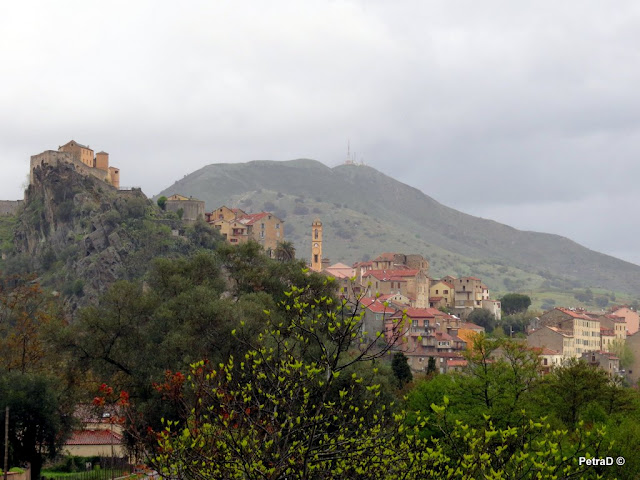 |
| Citadel of Corte |
 |
| Port of Calvi |
 |
| Calvi, the true birthplace of Chrstopher Columbus? |
 |
| Cities can be fun! |
 |
| Bonifacio - reaching the citadel. |
Markets
Local markets offer some of the most delicious local foods including, citrus fruits, seafood, fresh cheeses, wine, pastries, sausage, olives, and more.... Essentially, a mix of French and Italian cuisine - you cannot go wrong here! Other typical Corsican food includes wild boar, wild game and chestnuts. The local wines and beer (eg. Pietra) are also very tasty. Just writing this paragraph has nearly made me drool. ;D
 |
| I had no idea that so many types of citrus fruits existed. There was even a creepy yellow looking one called Buddha's hand. |
|
|
 |
| Spices; pepper mix.. |
 |
| What are these funky egg containing pastries? |
 |
| Fresh made mini donuts... |
Climbing

What can I say - Corsica is the place to be if you want to get some good climbing done -- the island is subdivided in 6 main regions which consist of different types of rock ranging from granite, to sandstone, and limestone. Due to weather conditions and this being a family trip, we did four shorter, easier climbing trips. The first stop was in Bavella (center-south-ish), where you find granite crags, high up in the mountains. And the grades seemed much harder than in our climbing guide! Our second climbing was in the valley of Restonica (no photos).
Our third stop was in the Isula Rossa region (northeast) at a very neat little crag with really fun routes. (We climbed here twice)
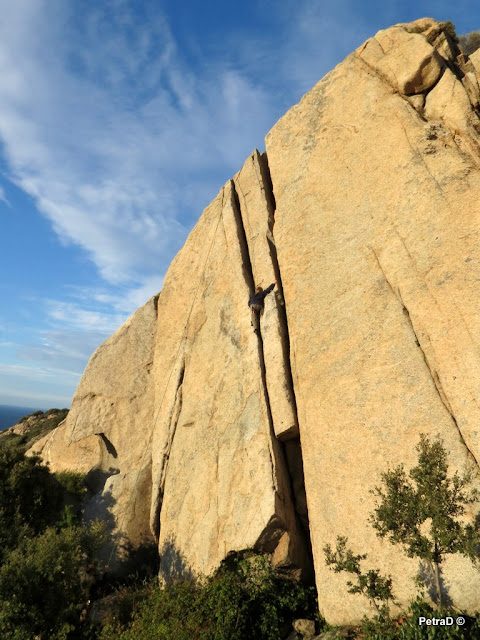 |
| Tommy doing the double crack. |
Hiking
There is plenty of hiking in Corsica, but since it was still a wee bit cold up in the mountains - my first attempt to go hiking in the Restonica valley resulted in a failed attempt due to heavy snow storm at the hike starting point - so we really had to wait for decent weather and stay at lower elevations. On our second attempt, we managed to do the hike to a lake, however, we still had to make our way through snow near the top.
 |
| In the Restonica valley. |
 |
| Almost near the top - Jakub, Anna, Tommy and Dave. |

Kayaking
Granite says it all. If there is granite, there is bound to be good kayaking. Corsica is also a very popular kayaking destination and since Jakub has been there four times already and is still coming back, it must be good. This year the water levels were quite low when we arrived, but the boys still managed to go down some rivers and have a good time.
Since there is easy access to beaches, surf kayaking is another option. Tommy got a short surfing lesson from Jakub one day....
 |
| A flat river right by the beach allowed Tommy to improve on his paddling skills. |
Flora and Fauna
I've come across lots of cool plants, flowers as well as some wild and domesticated animals while on this trip. One night when we were sleeping near Zonza, we heard this very bizarre loud and deep sound - possibly a braying donkey (or maybe just Dave :) but it was the funniest thing ever and wouldn't stop for a very long time...
 |
| Hermann's tortoise. |
|
|
 |
| Lots of cacti everywhere. |
 |
| Plenty of rosemary for cooking in the campsite. |
Beaches, ocean, sunsets
Some of the views we had were breathtaking. The beaches in Corsica are amazing and at this time of year, essentially empty. The sand varies from pure white to reddish and there are many pretty shells to be found.
..Much of the coast is also rugged and really neat.
 |
| Tiny abalone shell |
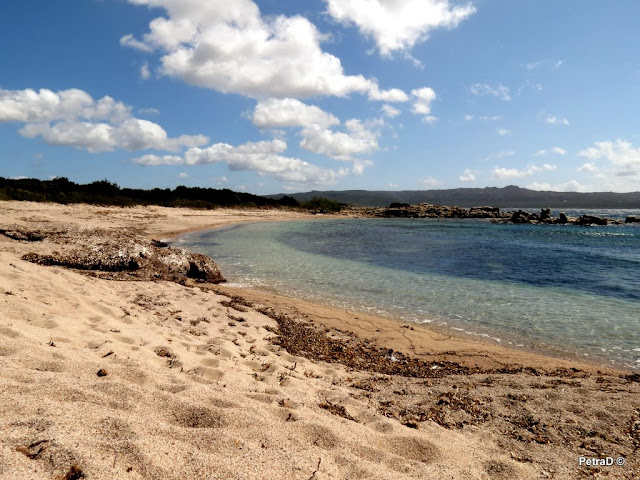 |
| Beach near Bonifacio. |
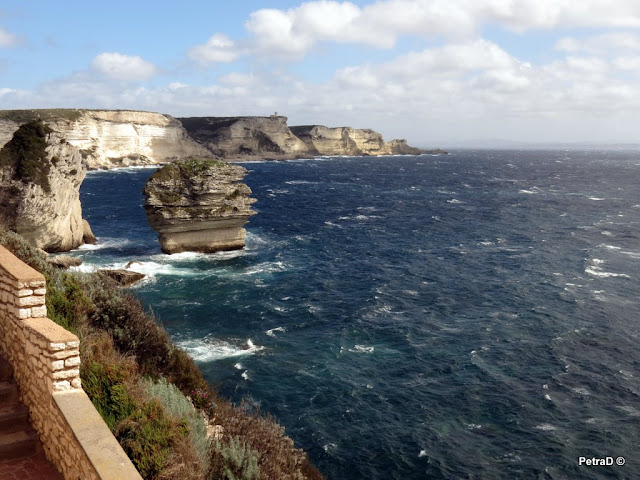 |
| Cliffs of Bonifacio. |
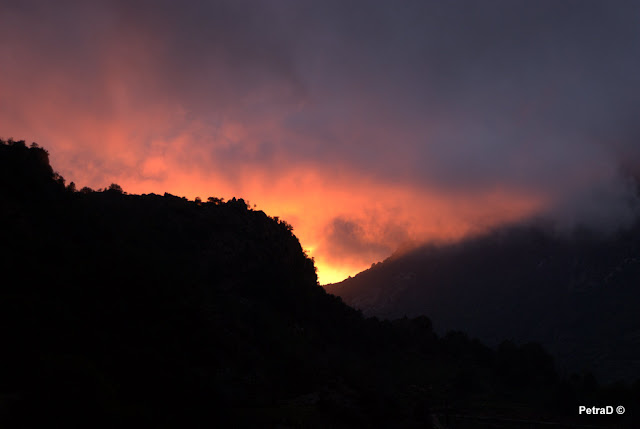 |
| Approaching the ocean - bloody sunset. |
 |
| This was one of the most dramatic sunsets I've ever seen. As we came out of the storm clouds and approached the ocean, the sun was shining through onto the red cliffs, making it look like they are on fire. |
 |
| Red cliff coast near Porto. |
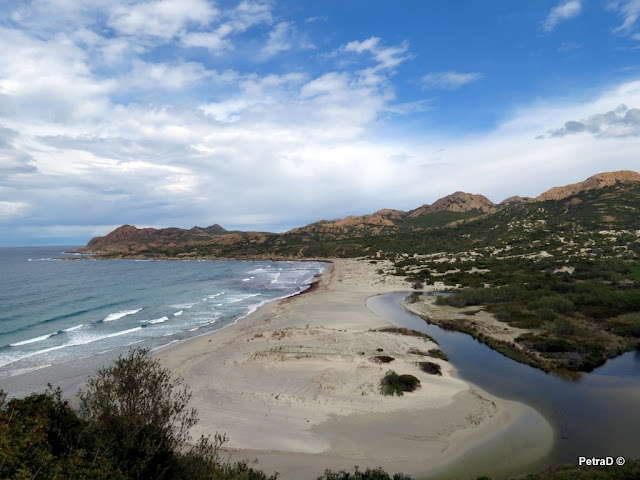 |
| Where river meets the sea.... northwest coast. |
The Crew...
We headed to Corsica with Tim Starr and Dave Prothero who went kayaking with Jakub and kept us company. It's been a blast - thanks boys for joining us!!
 |
| Planning the trip. |




 Day two consisted of stopping while sliding in the snow, pretending it was the glacier, using an ice axe. Also, we learned how to make different types of snow anchors. The most scary one was the "piolet ejectable" or the ejectable axe, which consists of making the typical T-slot ice axe anchor, except that you don't bury the axe with snow, and you attach an extra piece of string to the axe so you can later pull it out of the snow and make it fly in the air...I guess lots of the stuff we learned involves just pure physics, I had no idea that you could just pack a jacket sleeve with snow and use it as an anchor once buried under the snow - pretty cool stuff. Finally, at the end of the day, we walked around in pairs on rope and practiced securing our partner who would fall down intentionally. I managed to burn a hole through my black diamond back pack with the rope while securing someone...
Day two consisted of stopping while sliding in the snow, pretending it was the glacier, using an ice axe. Also, we learned how to make different types of snow anchors. The most scary one was the "piolet ejectable" or the ejectable axe, which consists of making the typical T-slot ice axe anchor, except that you don't bury the axe with snow, and you attach an extra piece of string to the axe so you can later pull it out of the snow and make it fly in the air...I guess lots of the stuff we learned involves just pure physics, I had no idea that you could just pack a jacket sleeve with snow and use it as an anchor once buried under the snow - pretty cool stuff. Finally, at the end of the day, we walked around in pairs on rope and practiced securing our partner who would fall down intentionally. I managed to burn a hole through my black diamond back pack with the rope while securing someone... 


























